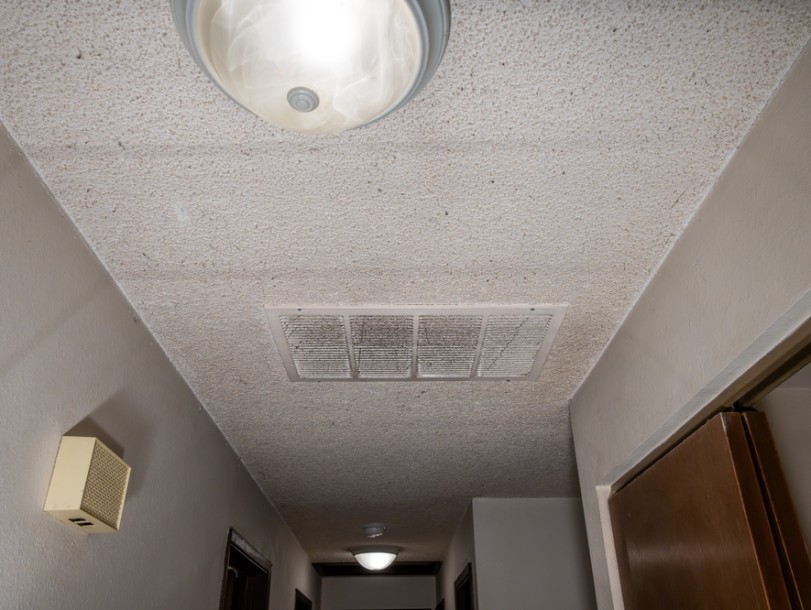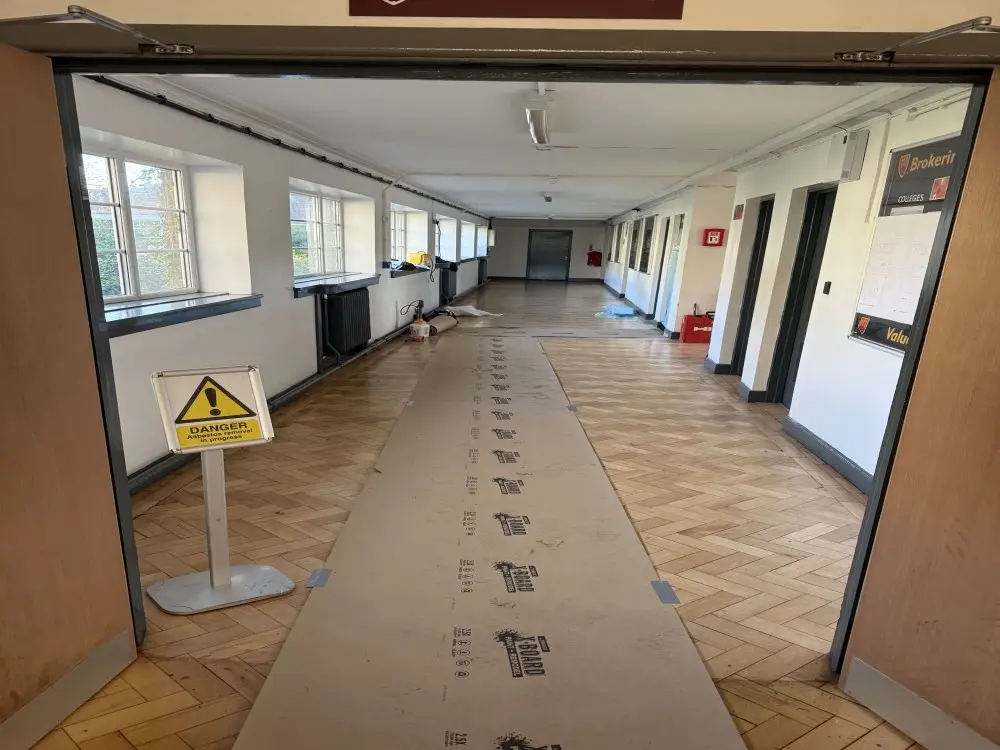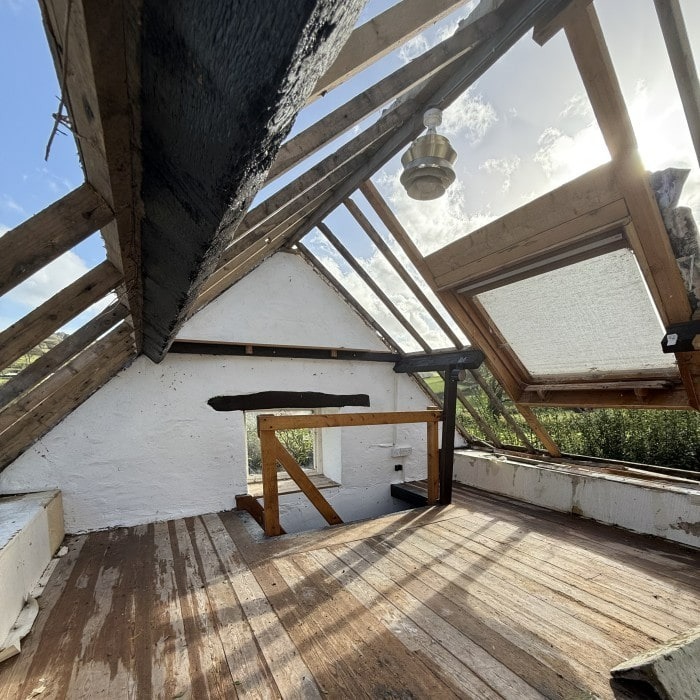Do all textured coating ceilings have asbestos?
Not at all, more modern textured ceilings are made without the use of any asbestos whatsoever. Estimates do suggest that as many as 50% of textured, or “Artex”, ceilings in pre-2000 homes contain asbestos, but that means about half do not. Of course, those which do can be a serious health concern if disturbed. The risk lies in the possibility of releasing microscopic asbestos fibres into the air, which can be harmful if inhaled.
What is an Artex ceiling?
An Artex ceiling was typically applied by brush or trowel, which would leave a distinctive, bumpy texture. Made up of tiny granules, often vermiculite or polystyrene, it was popular for its bright finish, ability to hide imperfections and its sound-dampening qualities. It’s now often regarded as dated, but remains common in homes built between the 1950s and 1980s.

Why was asbestos used in Artex ceilings?
Asbestos was added to Artex ceilings for several key reasons:
- Fire-resistance and heat insulation
- Sound absorption
- Low cost
- Durability and ease of application
Builders and decorators made use of asbestos-based textured ceilings for those beneficial attributes, especially during mid-20th-century housing booms.
How can you tell if your Artex ceiling has asbestos?
You can’t tell just by looking. Asbestos fibres are impossible to detect visually, being thinner than a human hair. Even ceilings that seem in good condition may contain asbestos. That means any disturbance, such as drilling, scraping or renovations, could release harmful fibres.
The safest way to identify asbestos? Professional asbestos testing. Specialists follow strict safety protocols, collect samples without putting anyone at risk, and send them for accredited lab analysis. DIY testing or removal is strongly discouraged.

Which houses are at risk of having asbestos in their textured coated ceilings?
Houses built between 1950 and 2000 face the highest risk. Usage of asbestos in Artex ceilings surged during that era and only began to drop in the early 1980s, with stricter bans coming later.
While there’s no clear data on geographic hotspots, older properties across the UK, including many in the North West, are more likely to have asbestos-containing ceilings. If your home was built or rewired before the late 1990s, it’s best to assume risk until proven otherwise.
Are asbestos-containing ceilings safe?
Left undisturbed and in good condition, asbestos-containing ceilings are generally considered low risk. However, there are many examples of common damage or disturbances, such as cracks, flaking, water stains or attempts to redecorate, which can release asbestos fibres. The release of these asbestos fibres poses severe health risks like mesothelioma, lung cancer and asbestosis.
In short, yes, they can be safe if untouched. However, only with careful monitoring. The moment they’re compromised, the danger rises sharply.

How should asbestos-containing ceilings be removed?
The only guaranteed safe way to remove asbestos-containing ceilings is by hiring professionals, like DACT Contractors, who offer full testing, removal and disposal services.
Our asbestos management process follows a similar structure regardless of the project at hand:
- Asbestos testing and survey to assess risk and confirm contents.
- Risk assessment and controlled removal, using correct PPE and following regulations.
- Safe disposal, including clean-down and sending hazardous waste to licensed facilities.
Book an asbestos survey with DACT Contractors
If you suspect your Artex ceiling could contain asbestos, or simply want peace of mind before any renovation, don’t hesitate to reach out. You can contact us for an expert asbestos survey, or give us a call on 01744 353 640. Our team will guide you through the process, explain how testing works, and arrange safe removal and disposal if needed.



